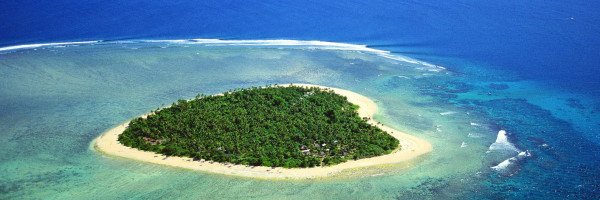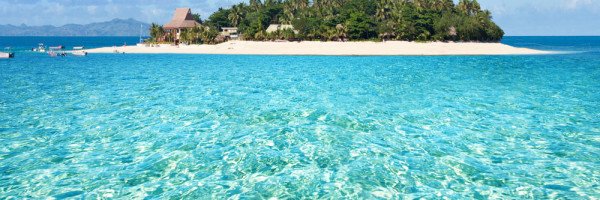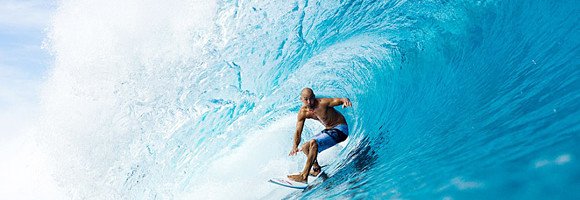Understanding Fiji’s Marine Biodiversity
Fiji is renowned for its stunning marine biodiversity, comprising diverse ecosystems that include coral reefs, mangroves, and seagrass beds. These habitats support an array of marine life, including over 1,500 species of fish, 400 species of coral, and numerous species of invertebrates. Fiji’s marine ecosystems are vital for the health of the oceans, providing essential services such as coastal protection and carbon sequestration. The coral reefs in Fiji are among the most diverse in the world, making the Fiji Islands a prime destination for those interested in marine life. Among the notable species you might encounter are the clownfish, parrotfish, and the majestic manta ray. The complex structures of the reefs provide shelter and breeding grounds for countless marine species, making them vital for ecological balance. For nature enthusiasts from New Zealand, exploring Fiji’s marine parks offers a unique opportunity to experience tropical biodiversity that contrasts with the temperate marine environments found around New Zealand’s coasts. Not only does it broaden understanding of marine ecosystems, but it also provides insight into conservation efforts that can be applied back home.Fiji’s Marine National Parks: An Overview
Fiji is home to several marine national parks, each designed to protect vital ecosystems and promote sustainable tourism. Notable parks include the Bouma National Heritage Park on Taveuni Island and the Namena Marine Reserve. These protected areas serve as sanctuaries for marine wildlife and are crucial for conservation efforts. Visiting these parks allows guests to witness firsthand the beauty of Fiji’s underwater world. Bouma National Heritage Park, for instance, features pristine coral reefs and lush mangroves, providing habitat for numerous species. The Namena Marine Reserve is known for its exceptional dive sites, showcasing vibrant coral gardens and diverse fish populations. When planning a visit to these parks, it’s essential to respect the local guidelines to ensure the preservation of these delicate ecosystems. New Zealanders can learn from Fiji’s approach to marine conservation by implementing similar protective measures in their own coastal areas, fostering a sense of stewardship over marine environments.Best Activities for Nature Enthusiasts
Fiji’s marine parks offer a plethora of activities for nature enthusiasts, ranging from snorkeling and scuba diving to kayaking and wildlife watching. Snorkeling in the crystalline waters of the Coral Coast allows visitors to explore vibrant coral reefs teeming with life. For those with diving certifications, the deeper waters of Namena Marine Reserve present an extraordinary opportunity to dive among schools of fish and encounter larger marine species. Kayaking through mangrove forests also provides a unique perspective on these vital ecosystems. Paddling silently allows enthusiasts to observe the rich birdlife and marine creatures that inhabit these areas. Wildlife watching tours, particularly for spotting dolphins or sea turtles, can further enhance the experience. For New Zealanders, participating in similar activities at home can help foster a connection with marine biodiversity. Exploring the marine reserves around the Bay of Islands or the Abel Tasman National Park can provide insight into the importance of marine conservation, mirroring the experiences found in Fiji’s marine parks.Conservation Efforts in Fiji
Conservation is a critical focus of Fiji’s marine national parks, with various initiatives aimed at protecting vulnerable marine species and habitats. Local communities often play a vital role in these efforts, engaging in sustainable fishing practices and habitat restoration projects. The Fijian government has also implemented regulations to safeguard marine biodiversity, including restrictions on fishing in protected areas and promoting eco-friendly tourism. Organizations like the Coral Triangle Initiative work in collaboration with local communities to improve marine conservation efforts. These initiatives not only protect marine life but also educate the public about the importance of preserving marine ecosystems. For nature enthusiasts from New Zealand, learning about Fiji’s conservation practices can inspire similar initiatives at home. Engaging in local conservation projects, advocating for marine protection, and participating in awareness campaigns can contribute to the health of New Zealand’s coastal ecosystems.Planning Your Visit to Fiji’s Marine Parks
When planning a visit to Fiji’s marine parks, it’s essential to consider the best times to go, available accommodations, and transportation options. The ideal time to visit is during the dry season, which runs from May to October, offering optimal weather conditions for outdoor activities. Accommodations near marine parks range from luxury resorts to budget-friendly hostels, catering to various preferences. Many resorts offer packages that include guided tours of the parks, making it easier for visitors to explore Fiji’s underwater wonders. Transportation in Fiji is generally straightforward, with options including domestic flights, ferries, and rental vehicles. For those traveling from New Zealand, direct flights to Fiji are available, making it a convenient getaway. Nature enthusiasts should prepare for their trip by researching specific parks and understanding their rules and regulations. This preparation is crucial in ensuring a respectful and enjoyable visit to the Fiji Islands and its marine parks.Marine Life Identification: A Guide for Enthusiasts
Identifying marine life while exploring Fiji’s waters can enhance the experience for nature enthusiasts. Various resources, such as field guides and mobile apps, can help visitors identify fish species and coral types. Familiarizing oneself with common species, such as the vibrant butterflyfish or the elusive nudibranch, can transform a snorkeling or diving trip into an educational adventure. Creating a checklist of species to look for can also make the exploration more engaging. For example, keeping an eye out for the reef sharks or the colorful clownfish can add an element of excitement. New Zealanders can utilize similar identification techniques while exploring the rich marine life found in places like Poor Knights Islands Marine Reserve or the marine parks around the Coromandel Peninsula. Engaging with local guides who possess extensive knowledge of marine ecosystems can also enrich the experience. These experts can share insights about the ecological roles of different species and the challenges they face, fostering a deeper appreciation for marine biodiversity.Connecting with the Local Culture and Community
Visiting Fiji’s marine parks presents an excellent opportunity to connect with the local culture and community. Many marine parks are located near indigenous Fijian villages, where visitors can learn about traditional fishing practices, cultural beliefs, and conservation efforts. Participating in village tours can provide valuable insights into how locals depend on marine resources and their commitment to sustainable practices. Supporting local businesses, such as eco-friendly tour operators and artisans, contributes to the economic well-being of these communities. Visitors can also engage in volunteer opportunities, helping with conservation projects or educational programs aimed at protecting marine life. For nature enthusiasts from New Zealand, this cultural exchange can be a profound experience. Engaging with local communities fosters a sense of shared responsibility for environmental stewardship, encouraging more sustainable practices both in Fiji and back home. By embracing the rich cultural heritage of the Fiji Islands, visitors can deepen their connection to the natural world and the importance of preserving its biodiversity.FAQs
What are Fiji’s Marine National Parks?
Fiji’s Marine National Parks are protected areas designed to conserve the rich marine biodiversity of the region. These parks encompass vibrant coral reefs, diverse marine species, and unique ecosystems, providing a sanctuary for both wildlife and visitors to explore and appreciate the underwater world.
How many marine parks are there in Fiji?
Fiji is home to several marine parks, with notable ones including the Bouma National Heritage Park, the Rainbow Reef Marine Park, and the Namena Marine Reserve. Each park offers unique features and ecosystems, contributing to the overall biodiversity of Fiji’s marine environment.
What types of marine life can be found in Fiji’s marine parks?
Fiji’s marine parks are teeming with a variety of marine life, including over 1,500 species of fish, numerous coral species, sea turtles, sharks, and vibrant marine invertebrates. The rich biodiversity makes it a fantastic destination for snorkeling and diving enthusiasts.
Are there any entry fees for visiting Fiji’s marine parks?
Yes, many of Fiji’s marine parks charge entry fees to help fund conservation efforts and maintenance of the parks. Fees vary by park, and it’s advisable to check in advance or inquire locally to ensure you have the correct information before your visit.
What activities are allowed in Fiji’s marine parks?
Visitors to Fiji’s marine parks can engage in various activities, including snorkeling, scuba diving, kayaking, and wildlife observation. Some parks may also offer guided tours or educational programs to enhance your experience and understanding of the marine ecosystem.
How can I contribute to the conservation of Fiji’s marine parks?
Visitors can support conservation efforts by following park regulations, practicing responsible snorkeling and diving techniques, participating in clean-up activities, and donating to local conservation organizations. Being an eco-conscious traveler helps ensure the preservation of Fiji’s marine biodiversity for future generations.
When is the best time to visit Fiji’s marine parks?
The best time to visit Fiji’s marine parks is during the dry season, which typically runs from May to October. During this period, water visibility is at its best, and weather conditions are generally more favorable for outdoor activities, making it an ideal time for nature enthusiasts to explore the underwater wonders of Fiji.
References
- Fiji Islands – A comprehensive resource for travel information, including details on Fiji’s marine national parks and biodiversity.
- National Geographic – Fiji’s Marine Biodiversity – An article exploring the unique marine life found in Fiji, highlighting conservation efforts and ecological significance.
- World Wildlife Fund – Fiji – Provides insights into Fiji’s diverse ecosystems, including marine parks, and ongoing conservation initiatives.
- Fiji News – Marine Parks and Biodiversity – An informative piece discussing the importance of marine parks in preserving Fiji’s rich biodiversity.
- ScienceDirect – Marine Biodiversity in Fiji – A scholarly article examining the marine biodiversity of Fiji and the impacts of climate change on its ecosystems.







